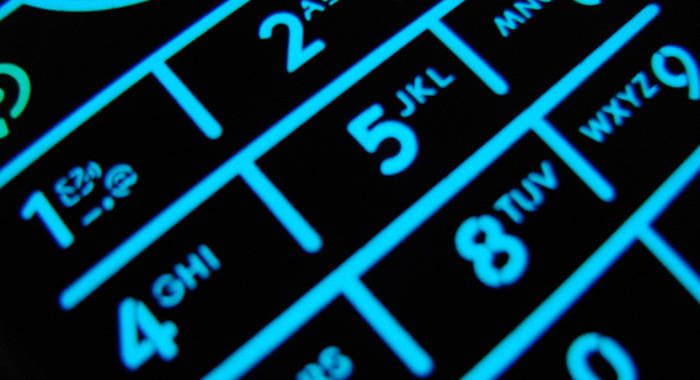Close-range wireless technologies in the management of infectious disease outbreaks and spread. A proposal by Phillip Jackson (Digital Economy Researcher) phillip.c.jackson@gmail
I welcome feedback
One of the major challenges brought to the fore in the wake of the Coronavirus outbreak and now, pandemic, is tracking the multiplicity of contacts an individual who tests positive may have had over the infectious period of his illness. The use of close-range wireless technologies or other cell phone-based locational data capabilities can provide an accurate and objective means to conduct this contact analysis.
NOTE: In this note the term NFC (near field communication) would be used as shorthand for the range of possible technologies that can provide the capability to implement the proposal. This proposal, however, strongly recommends the use of the Bluetooth protocol given its ubiquity on mobile devices. The relative strength of the Bluetooth signal can be used as a proxy for proximity between individuals carrying their mobile phones.
Here are two approaches to implement this.
1. In the event of an outbreak, citizens can voluntarily activate “NFC” capabilities through a free app that can run on all smartphones even without credit much like Facebook Lite. The data would be automatically stored for potential analysis by a competent epidemiological authority in a given country. The app would also be used to push related public service announcements to the user.
2. In the event of an outbreak, a master activation switch backed up by the requisite legalities would activate this capability on every phone within a given telecommunications jurisdiction.
3. Cross border issues would be decided across various telecommunications jurisdictions to allow for cross-border contact analysis
This is how it will work
An appropriate close-range wireless technology would allow two devices within sufficient range to recognise each other and create a timestamp and possibly duration of their instances of proximity. Because this note is more conceptual than technical, I wont go further into how these various technologies work. The really smart people would work that out, although I believe Bluetooth technologies can be adopted to solve this challenge.
In the event of an outbreak, the capability would be activated by any of the two first means outlined above. The data would be stored on appropriate hyper-secure servers. When an individual is tested positive for the infectious agent, the collected data would be processed for the contact analysis of the positively-tested individual over his/her infectious period i.e. the period over which he/she was able to potentially transmit the infectious agent (viruses, bacteria, fungal spores, etc.). Additionally, the accuracy of the data analysis would be greatly assisted by filters that match the infectious profile of the infectious agent. For example, if the effective range of transmission of the agent is 0 to 10 feet then the data analysis can be restricted to this distance parameter and so on and so forth. In any case the most important pieces of data for the purposes of contact analysis is time and proximity. Of course, the strength of this approach is based on the assumption that an individual almost always has his or her phone on their person and, therefore, one of the most accurate proxies for locational and temporal analysis.
Who would conduct the contact data analysis?
A competent epidemiology centre with its various regional networks would do the analysis and make the appropriate intervention. It is expected that this analysis would be done by simply reviewing the proximity records collected by the app and the authorities contact the persons through their mobile numbers as recorded by the app. Going forward, such a capability may be automated using artificial intelligence combined with other data analytics tools.
What would happen after the analysis is done?
The approach provides to epidemiology managers a very accurate, objective and rapid tool to identify persons who may have been exposed to an individual who tested positive. This significantly improves reaction time and increases accuracy by reducing analysis time and effort done previously through interviews with infected individuals. Information gained through such interviews is time-consuming and may be compromised by memory lapses and other hurdles.
In addition to epidemiology managers and their response staff, the approach will allow for individual who were determined to have been potentially exposed to be alerted through the app and encouraged to seek medical attention at the nearest health centre for review and screening. The individual would be encouraged to self-quarantine/isolate in the interim. The app can provide clear instruction on how to conduct proper quarantine/isolation for both the individual and his family.
Main Concerns
The major concerns are related to privacy. A voluntary participation takes care of this upfront. Beyond this, the design protocols for the use of the data as mentioned above go further in addressing privacy issues. The limitation of voluntary participation is coverage. This may create holes in the data analysis that may stymie a more effective and comprehensive response and management.
The master switch approach is the best option from a management perspective. However, the laws, regulations and protocols governing its use must be sensitive to privacy concerns and should be protected form abuse for purposes outside its intended scope.
The opinions presented in this content belong to the author and may not necessarily reflect the perspectives or editorial stance of iWitness News. Opinion pieces can be submitted to [email protected].







This is already existing in some parts of the world including Israel. WELCOM TO THE NEW WORLD ORDER. Even if this system is nice for harvesting analytics, it has the potential to backfire. How would it work in societies like ours? Imagine the COVID19 patient whose privacy was breached? Though well intended, such system would become the authorized trigger for “THE PURGE “, either by the government or vigilantly style.
As it is now. The authorities already know by virtue of the process all who were tested and their results. What the proposal suggests is an efficient way to do the contact tracing of persons who may have come into contact with a positively tested person so as to give them a heads up and further instruction related to seeking medical assistance in verifying their status as well as taking precaution that limit spread of virus assuming that they may have been infected by the initial contact.